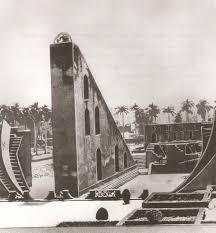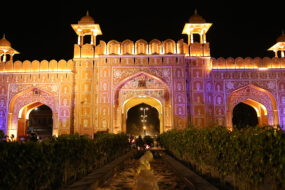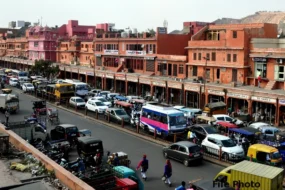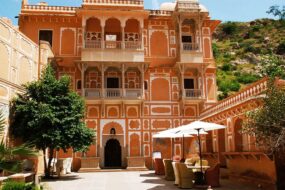Famous for its intriguing sculptures and structures, Jantar Mantar Observatory is among the most popular tourist places in Jaipur. Maharaja Sawai Jai Singh, the ruler of Jaipur was one of the best theorists of ancient India. After achieving the milestones of constructing the planned city Jaipur, as well as several other scientific and architectural epitomes, the Maharaja built five astronomical instruments to study space. These instruments were called Jantar Mantar, which means Calculating Instrument. It tells a lot about how people in olden times calculated or estimated time. The huge Samrat Yantra sundial – a time calculator, is really impressive.
The largest of these instruments is located in Jaipur and has been declared as a World Heritage Site by UNESCO.
Jantar Mantar consists of fourteen geometric devices that measure time, predict eclipses, track the location of stars and the Earth’s movement around the sun. Samrat Yantra is the largest instrument in this observatory and it was used to forecast time. Plotting the shadow of Samrat Yantra, the time for eclipses and the arrival of monsoons can be calculated. Samrat Yantra is also the largest sundial in the world.
Jantar Mantar now serves as one of the major Jaipur tourist places and a pioneering source to amateur astronomy students.
Entry Fees:
Foreigners: INR 200 for adults, INR 100 for students
Indians: INR 40 for adults, INR 15 for students
Visiting Hours: 9:30 a.m. to 4:30 p.m
Note: Composite ticket for entry to Jaipur monuments can be procured from any of the 5 monuments that it includes, viz. Albert Hall, Hawa Mahal, Jantar Mantar, Nahargarh Fort, and Amer Fort. The prices are as follows:






